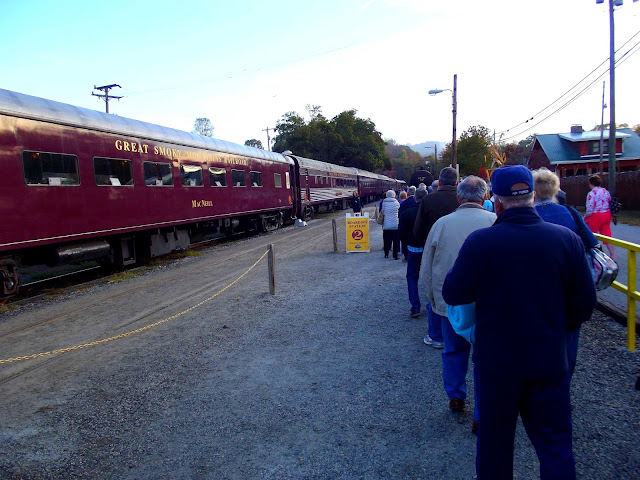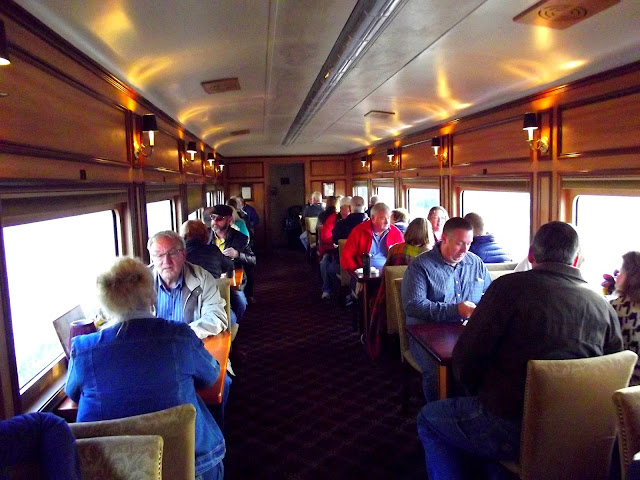The Wizard’s Magic Pipe
Paul R. Wonning
 |
| The Wizard’s Magic Pipe |
The initial shock of cold water
slapped Cecil Barnes awake. As the water heated, he stuck his head under the
stream and wetted his hair. He reached for the shampoo, squeezed a small puddle
of it into his palm and lathered his hair. The rich smell of the shampoo
permeated the steamy air. He felt the hot water sooth the stiff muscles in his
neck and back. He hadn’t been sleeping well. He needed a new mattress. As this
thought settled into his mind, he knew that his mattress wasn’t all that he
needed to change.
As he worked the shampoo through
his hair, his mind drifted back to grade school. He remembered something his
history teacher, Mrs. Herman, had said many years ago.
“History is more than events
which happened long ago. Our lives are a part of this collection of stories.
Where we are born, the way we live our lives, those we love and how we die are
all elements of this unique story.”
Cecil rinsed the rich lather from
his hair. The sudsy water ran down his body and into the drain. His hand sought
the washcloth and soap. While he washed himself, he remembered the rest of her
lecture.
“Our children, parents and
friends are all ingredients of this montage, and we of theirs. In addition to this,
we are also part of a much older story, the chronicle of the earth and its
people. Each person who ever lived is a thread in this tapestry, and these
threads weave together like threads in a tapestry. These tales combine to
create the history of our world.”
Cecil felt that if that were
true, then his story would be a boring chapter in that history. His job was
humdrum, his love life nonexistent, and his chief entertainment consisted of
going to flea markets.
Cecil had a plan, though. He
would get that new job in Indianapolis
"Darnn," Cecil said
aloud, as his shoestring broke with a snap.
Since this was his favorite pair
of shoes and he had no spare laces, he would have to improvise until he could
buy more. As he began loosening the laces, his cell phone rang. His mother’s
number was flashing on the display screen.
He picked up the phone and said,
"Hey, Mom, what's up?"
"Hello, Cecil. How are you this
morning?" she asked.
"Okay. I am just getting
ready to go out."
"Are you going to the flea
market?"
"Yes, Mom, you know I like
to go there on Sundays."
"And eat all that greasy,
unhealthy food?"
"Yes, Mom, and eat all that
greasy, unhealthy food."
“I hope you eat healthier the
rest of the week.”
“I do,” Cecil said, feeling
guilty about the lie.
"Are you still collecting
and smoking those nasty old pipes?"
"Yes, Mom, I still collect
them, and I do smoke one occasionally." He cringed inwardly at the fib. He
loved relaxing to music and a pipe of tobacco each evening after work.
"That is a nasty, vile
habit. I don't know how you ever got started with that. You certainly didn’t
learn it from me."
“No, Mom, I didn’t.” A memory of sitting in his grandfather’s lap
while the old man smoked his favorite pipe crowded into his head. The pipe had
a horse’s head, and Cecil could still smell the wonderful fragrance of the
tobacco as the old man told him stories.
"Did you talk to that
company in Indianapolis
"Yes, I am still talking to
them. One of their sales reps is going to retire, leaving a position open. It
won't start for two months, and then there is a one year training period before
I can start."
"Why so long? Surely it
isn't that complicated."
"The owner is a stickler for
starting at the bottom. He wants all his sales people to work three months on
the receiving dock. Then they work for three months in the warehouse. After
that they put in three months processing orders. I work with the retiring sales
rep the last three months."
"But you've already done
some of that stuff in your current job."
"Yes, but the owner wants
his sales people to know the entire operation so they are knowledgeable with
customers."
As he talked, he managed to get
his shoe laces loosened up. He pulled the broken end out far enough to tie it.
Then he tightened up the laces again and tied his shoe. The frayed end of the
shoelace looked somewhat shabby, but it would have to do.
"Are you going to that flea
market alone?"
"Yes, Mom. No, I don’t have
a girlfriend yet,” he answered, anticipating her next question. “I don't want
to get tied into a relationship with a girl and then move to Indy."
"But that isn't far from Columbus
"There are girls in Indianapolis
"Well, maybe," her tone
was uncertain. "They are probably all farm girls with straw sticking out
of their ears."
Cecil rolled his eyes and said,
"Hey, Mom, it's been nice talking, but I have to go."
"So soon, dear? Gosh, we
just got started talking."
"My cell phone battery is
about to die."
"If you would get a normal
phone, we could talk longer. That always happens when I call."
"Sorry, Mom, but..." he
hit the cut off button.
He lay back on the bed,
exhausted. She always had that effect on him. A few minutes on the phone with
her and he felt like he had run a marathon. He realized that in just a few
minutes she had extracted everything that happened of note during the last week.
It hadn’t always been like that.
After Cecil's father died in the car wreck, his mother became overprotective.
When he graduated from high school, he left New Jersey Ohio
He lay there musing about their
conversation and the state of his life. He was ready for a change and hoped the
job in Indianapolis
As he walked out to his car, he
reveled in the exhilarating weather. The chill in the air and falling leaves'
fragrance hinted at a fine autumn day. He would find fresh apple cider at the
orchard’s stand, which was always one of his favorite treats. There would be
honey for his toast as well. He licked his lips in anticipation as he got in
his car and drove off.
Cecil loved flea markets. The
sights, the sounds and the smells all combined to create a festive, exciting
atmosphere. As he entered the savory aroma of sausages broiling behind a greasy
glass case greeted him. This smell accompanied pungent, spicy barbecued pork
and musky smelling roast beef. He sniffed at the odors of the other high fat, zillion-calorie
fare offered. Of medium height and slightly pudgy, he didn't eat this stuff
often, but at the flea market he always partook. It was one of his few guilty
pleasures.
Cecil stopped in front of one of
the glass cases to peruse the offerings. He decided to start with a beer brat.
He would return for one of those cheesy, spicy tacos before going home. He
stepped to the back of the line. The woman behind the counter smiled at him
when he stepped up to place his order.
"I'll have one of those beer
brats, some onion rings, and a root beer," he said.
"Sure enough," she
replied as she slapped a brat into a bun. She tossed some of the juicy onion
rings into a bag, sloshed some ice into a cup and filled it with the fragrant
beverage.
Thus armed, Cecil sat down at a
table to eat.
This was what he loved. Watching
the people go by as he ate, he saw a rich diversity of people. Young parents
with children, excited by the merchandise, waltzed by. There were also older
couples enjoying each other’s company as they browsed the vendor’s tables. He watched one young couple stroll by,
holding hands. To be like that would be wonderful. He finished the brat, threw
his paper plate and cup in the trash bin, and started out down the first aisle.
Vendors lined the aisles hawking
every imaginable type of merchandise. He stopped periodically to look at offerings
that interested him. As he rounded the end of one aisle and started down the
next, the corner booth opposite him attracted his attention. A swarthy young
man was standing behind a richly carved wooden table crowded with a stunning
variety of pipes. He stopped to look. These pipes were neat, but expensive. But
it would be fun to look and he just might find one to add to his collection.
Sarna’s apprehension grew as he
watched the crowd flow by his table. His wares at the flea market this weekend
had attracted little attention. Only two elderly men had stopped to peruse his
selection of pipes. His master could not use an elderly man.
The anti-tobacco craze, which had
surfaced in recent years, was making things difficult. Young men were no longer
attracted to pipe smoking the way they once were.
His time was running short. He
had to find someone to purchase it. He must find this person soon. Not only did
he have to find a buyer, the purchaser must be the right sort of person. He had
very little time to make another error.
He noticed a young man coming
into view. This young man saw Sarna’s table and stopped. His face displayed
interest as he began walking over to the table. Sarna studied him carefully.
Over the centuries, Sarna learned to judge character types well. This man
displayed the necessary interest. A quick read of his personality revealed that
he could be problematic. Sarna didn’t have time for problems.
He glanced at the thinning crowd.
Sarna’s experience at flea markets taught him many things. Early arrivals at
the market were buyers. Later in the day, the browsers replaced the buyers.
This day was drawing to a close. Soon, the market would be empty and he would
have to wait another week.
He watched as Cecil approached
the table. Sarna made a quick decision. He reached under the table, pulled out
a carved wooden box and placed it at the rear of the table.
Cecil studied the pipes. Most
were ornate and didn't appeal to his taste.
His roving eye stopped at a
carved wooden box at the rear of the table.
What's in that one? "
"This is my best pipe,"
answered the man, handing the case to Cecil.
Cecil opened the case. A
beautifully colored meerschaum pipe lay inside. He felt something stir in him
as he rubbed the pipe with his fingers.
“That is a magic pipe,” the
vendor said with a wink. “It brings good fortune to its owner.”
“Good fortune,” said Cecil. “I
could use some of that.”
As Cecil felt the smoothness of
the pipe, he entered a story that began hundreds of years ago and thousands of
miles away. This story was about to catch up with him.
Buy Paul Wonning's At:
Vendor's Outlet Mall 1305 North Lincoln St
Greensburg, Indiana, IN 47420
(812) 716-2242
Wholesale Pricing Available
For more information, contact:
Mossyfeetbooks@gmail.com
Orders over $50.00 Free Shipping
Indiana Places
Abes Beer Garden
Stories of American History
Mossy Feet Books
YouTube
Paul Wonning's Books on Amazon Page
Paul Wonning's Books on Smashwords Page
Paul Wonning's Books on Apple
Paul Wonning's Books on Kobo
Paul Wonning's Books on Barnes and Noble
Paul Wonning's Books on Createspace
Paul Wonning's Books on Google Play
© 2017 Paul Wonning















